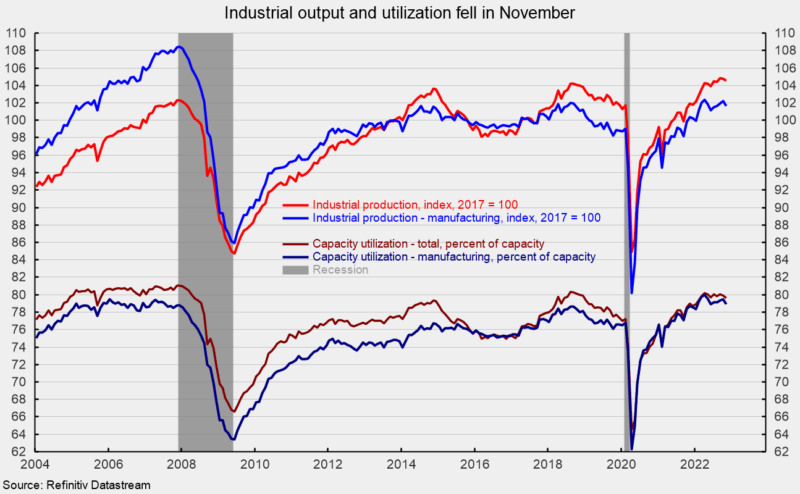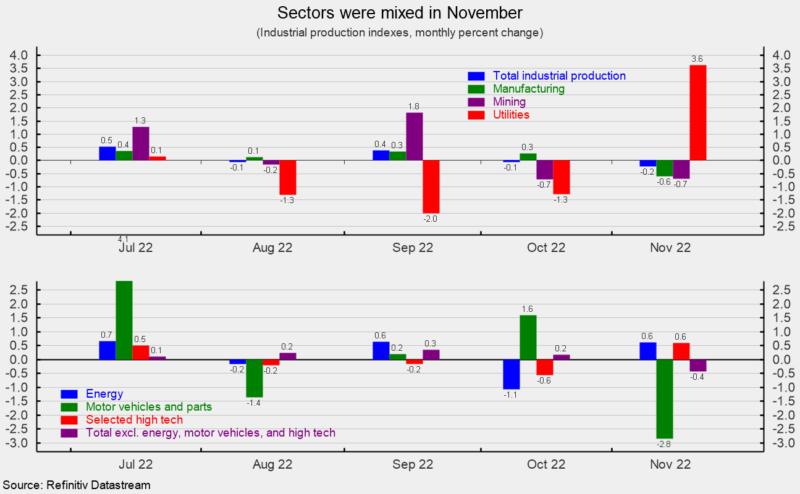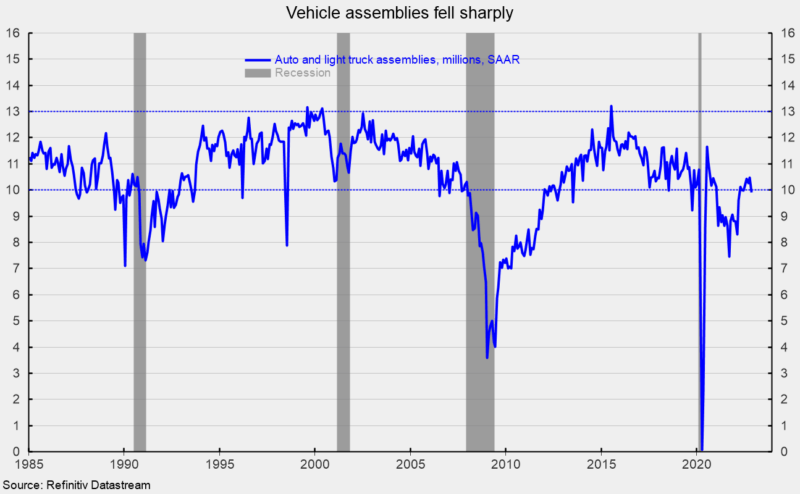Manufacturing Sector Declines in November
Total industrial production decreased by 0.2 percent in November after declining by 0.1 percent in October. Total industrial production is down in five of the last seven months. Over the past year, total industrial output is up 2.5 percent (see first chart).
Total industrial capacity utilization decreased 0.2 points to 79.7 percent from 79.7 percent in October. Utilization may be plateauing near the long-term (1972 through 2021) average of 79.6 percent but remains well below the highs of the 1970s when it was above 88 percent.
Manufacturing output – about 74 percent of total output – posted a 0.6 percent decrease for the month following four consecutive increases but is the third drop in the last seven months (see first chart). From a year ago, manufacturing output is up 1.4 percent.
Manufacturing utilization fell to 78.9 percent but held above its long-term average of 78.2 percent. However, it remains well below the 1994-95 high of 84.7 percent.
Mining output accounts for about 16 percent of total industrial output and fell 0.7 percent last month (see top of second chart). Over the last 12 months, mining output is up 6.3 percent.
Utility output, typically related to weather patterns and about 10 percent of total industrial output, surged 3.6 percent for the month following three consecutive declines. Among the components, natural gas fell 2.0 percent, but electric jumped 4.8 percent. From a year ago, utility output is up 4.6 percent.
Among the key segments of industrial output, energy production (about 27 percent of total output) rose 0.6 percent for the month (see bottom of second chart) with gains in consumer energy products (2.4 percent), converted energy products (1.2 percent), and commercial energy products (up 0.6 percent). Oil and gas well output fell 0.7 percent, while primary energy production was unchanged for the month. Total energy production is up 5.5 percent from a year ago.
Motor-vehicle and parts production (about 5 percent of total output) sank 2.8 percent after a 1.6 percent gain in October (see bottom of second chart). From a year ago, vehicle and parts production is up 5.6 percent.
Total vehicle assemblies fell to 10.25 million at a seasonally-adjusted annual rate. That consists of 9.91 million light vehicles and 0.34 million heavy trucks. Within light vehicles, light trucks were 8.19 million while cars were 1.72 million. Assemblies have risen sharply from the lows but remained near the lower half of their typical prior range.
The selected high-tech industries index rose 0.6 percent in November (see bottom of second chart) and is up 1.6 percent versus a year ago. High-tech industries account for just 2.1 percent of total industrial output.
All other industries combined (total excluding energy, high-tech, and motor vehicles; about 66 percent of total industrial output) fell 0.4 percent in November (see bottom of second chart). This important category is 1.0 percent above November 2021.
Overall, industrial output fell in November, with many segments showing declines, particularly motor vehicles; energy and high tech were notable exceptions. Elevated price increases, weak consumer sentiment, an aggressive Fed tightening cycle, and fallout from the Russian invasion of Ukraine remain significant threats to the economic outlook. Caution is warranted.








